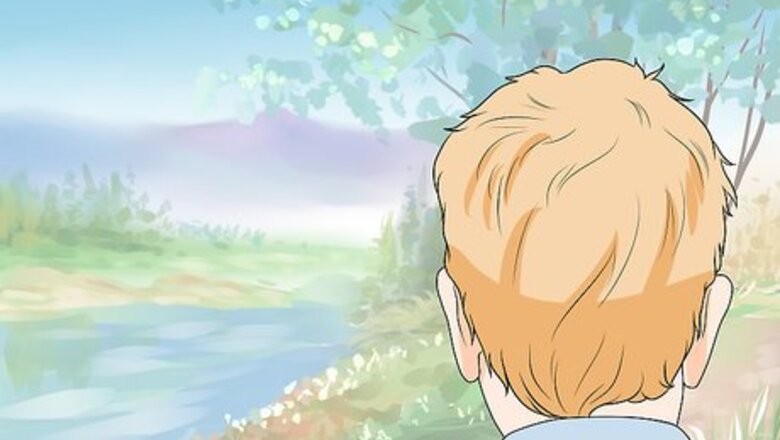
views
Building a Trap
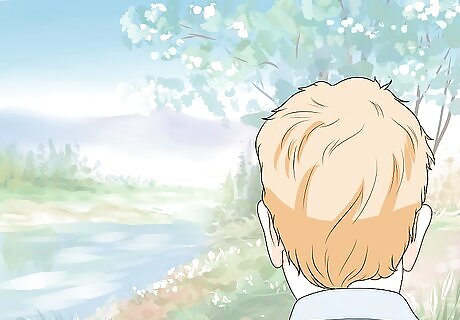
Choose an area near water to set your trap. Select an area where frogs have been spotted to try to catch one with your trap. Frogs love water, so areas near ponds, rivers, lakes, and streams are good places to try to catch them. Frogs mostly live on land but will frequently visit wet, shady areas and shallow water.
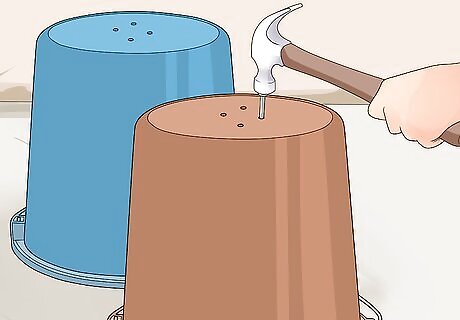
Use a hammer and nail to poke 3-4 holes in 2 medium-sized buckets. You don’t want your buckets to fill with water when you’re trying to catch frogs with them, so take a hammer and a nail to puncture a few holes through the bottom of them. Be careful not to crack the bottom. Smaller frogs may be able to escape through cracks or breaks in the buckets.
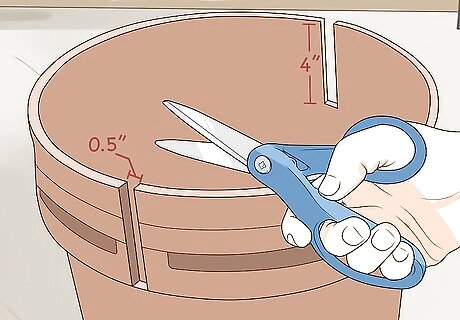
Cut a slot in both buckets large enough to fit a plywood board. The slots will have a 4 ft (1.2 m) by 8 ft (2.4 m) plywood board that is ⁄2 inch (1.3 cm) thick fit into them. Use scissors or clippers to cut out a 4 in (10 cm) deep slot on the rim of each bucket. Make sure the slot is as wide as the thickness of the board so it can fit into it.Tip: Check that the slot is large enough by sliding the board into it. Each bucket should have a slot that the board can fit into.
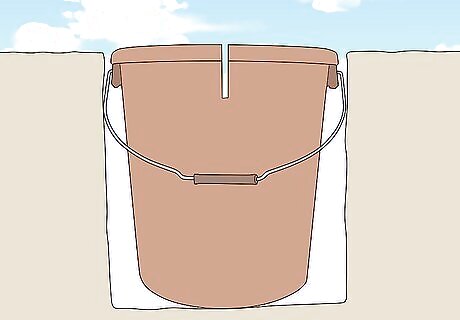
Dig a hole big enough to fit 1 of the buckets in it. After you’ve chosen the location for your trap, dig 1 hole deep and wide enough to fit your bucket into without any of the rim sticking out. Place the bucket into the hole and make sure the rim is even with the ground. If you’re near a body of water and can’t dig a hole deep enough without it filling with water, try to move further away from the water to place your trap.

Fill the area around the bucket with dirt. Use the dirt from the hole that you dug to fill in any gaps around the bucket. There should be no space between the bucket and the ground, and it should be held in place firmly. Try to shake the bucket to make sure it’s secure in the hole.
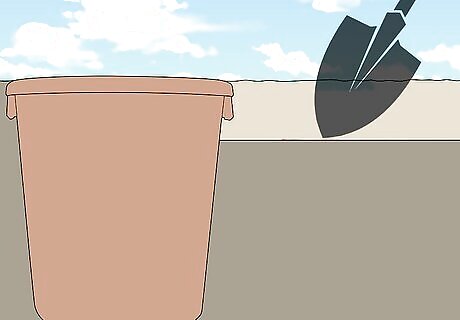
Make a trench 4 inches (10 cm) deep and as wide as your board. Start the trench at the slot that you cut into the bucket. Make the length of the trench 4 inches (10 cm) shorter than the total length of the plywood board. Make sure the walls of the trench are even and consistent.
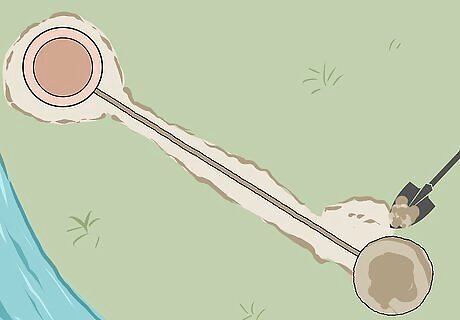
Dig another hole at the end of the trench for the second bucket. Start right where the trench ends and make sure the hole is deep and wide enough to fit the bucket into it. Use the dirt you remove to fill in the space around the bucket so it’s secure. Make sure the slot that you cut is facing towards the other bucket. The rim of the bucket should be level with the ground.
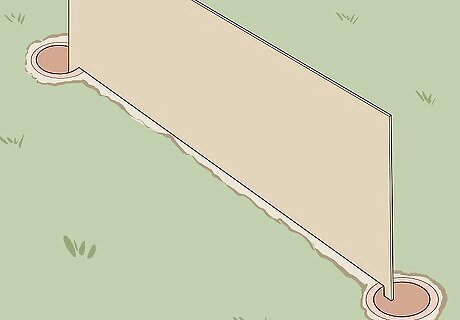
Slide the plywood board into the slots in the bucket. The board will slide right into the trench and the slots that you cut into the buckets. It should be able to stand upright on its own. Use dirt to fill in any space in the trench to help support the board. You can hammer stakes into the ground next to the board to help support it.
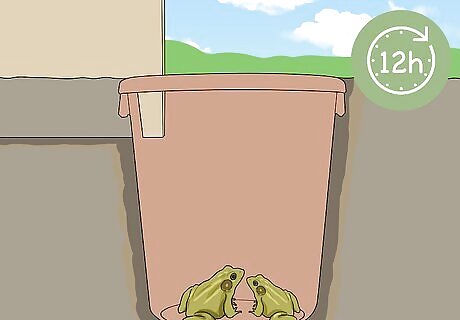
Leave the trap for 12 hours and then check it for frogs. As frogs hop along, they won’t be able to jump over the plywood board and will be safely guided into one of the buckets, where they’ll be trapped. Frogs like to come out at night, so you need to leave the trap alone overnight or for 12 hours. Check the buckets in the morning to see if any frogs are trapped in them. Don’t leave the trap for too long or any frogs that you catch could die from dehydration, hunger, or predators.
Using a Net
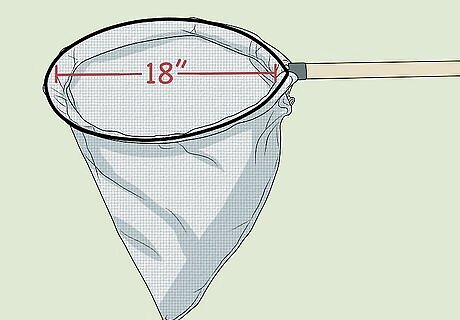
Use a net with a handle and an 18 in (46 cm) hoop to catch frogs. Make sure the webbing of the net is small enough so that a frog cannot escape from it. Choose a net with a handle that is at least 3 feet (0.91 m) long so you can reach far enough to catch a frog. You can find nets at a local department store or online.
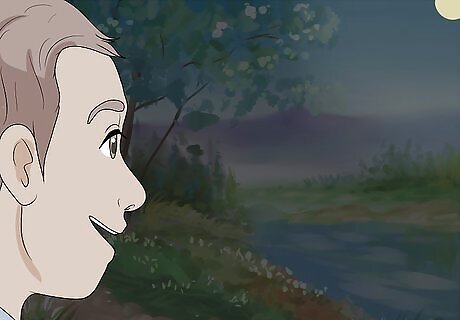
Wait until dark to try to catch frogs. Most frogs are active at night, so you’ll have a much higher chance of catching one after dark. Don’t wait in the area for the sun to go down or the frogs may not approach where you are. You can kill time by practicing catching tennis balls or something similar with your net.
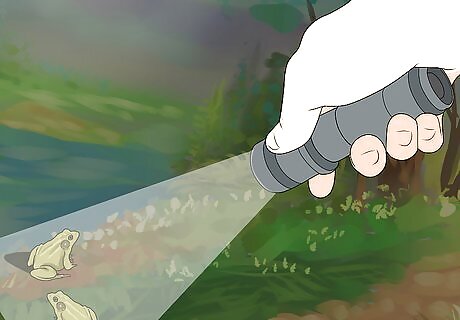
Look for frogs near the water with your flashlight. Frogs love water, so a great place to look for them is near a pond, lake, or river. They are often found on the banks of ponds or rivers, so use your flashlight to shine along the bank. Look for bright white eyes shining in the light. Be mindful of snakes as you walk along the bank!
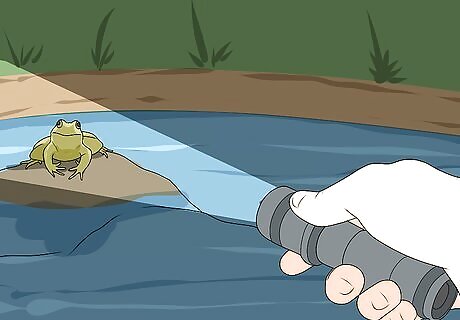
Hold the light on the frog as you approach. When you find a frog, keep the flashlight fixed on it so it can’t see you. Be as quiet as you can when you approach the frog. The light will prevent the frog from seeing you, but it can still hear very well.Tip: If you are catching frogs with friends, have one person keep the flashlight fixed on the frog as you approach it.

Drop the net on top of the frog. Use 1 swift motion to drop the net directly on top of the frog. Hold pressure down so the frog can’t escape as you make your way to the end of the net. Wait for about 2 minutes to allow the frog to settle down a little bit before you grab it. Try not to squish the frog with the edge of the net.
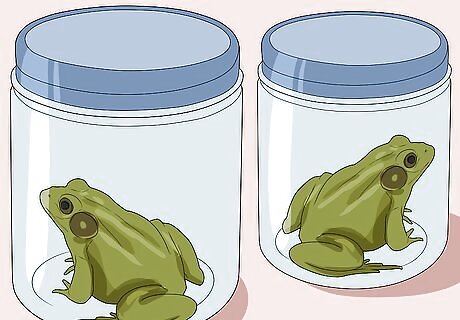
Keep the frogs in a container with a lid. After the frog has calmed down a bit and stopped jumping around, grab a hold of it through the net and lift the net from the ground. Take the frog out of the net with your other hand and place it in a container with a lid so it can’t jump out. Make sure the container has ventilation so the frogs can breathe.
Using Your Hands
Locate a body of water. Small ponds are best. Make sure frogs abound. You can check by listening for them or by observing them on previous visits. Late spring and early summer is the optimal period in the northern hemisphere.
Search for frogs. Walk along the edge of the pond or lake and keep your eyes peeled for any frogs on the shore. Be warned, they are often somewhat camouflaged.
Once you find one sneak up behind it. Move slowly.
Catch the frog. Cup your hands around it (but not too close to it), making sure you block off the water. Quickly bring your hands together to grab it. You'll need to grasp it firmly, but don't squeeze it because that will possibly harm it.















Comments
0 comment